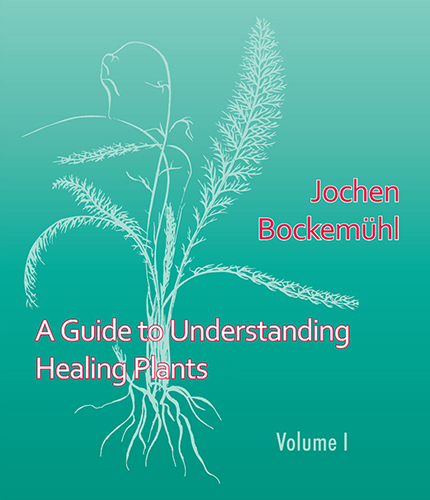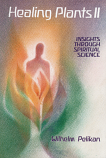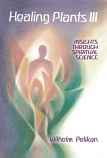
|
Home
::
Books
::
Books: Alphabetical list
::
Guide to Understanding Healing Plants, A. Volume I. MP9222
|
Guide to Understanding Healing Plants, A. Volume I. MP9222


Basket is empty
Categories
-
 Books
Books
-
 Books: Alphabetical list
Books: Alphabetical list
-
 Illustrated Children's Books
Illustrated Children's Books
-
 For Children, Parents and Teachers
For Children, Parents and Teachers
-
 Songs and music for Children, Parents and Teachers
Songs and music for Children, Parents and Teachers
-
 Poetry and Plays for Children and Adults
Poetry and Plays for Children and Adults
-
 Education
Education
-
 For Eurythmists and Teachers
For Eurythmists and Teachers
-
 Art, painting and drawing
Art, painting and drawing
-
 Illustrated by David Newbatt
Illustrated by David Newbatt
-
 Medicine and Therapies
Medicine and Therapies
-
 Biography and biographies
Biography and biographies
-
 Ehrenfried Pfeiffer
Ehrenfried Pfeiffer
-
 Nature and Agriculture
Nature and Agriculture
-
 Philosophy, Anthroposophy and Literature
Philosophy, Anthroposophy and Literature
-
 Inner Development and Spirituality
Inner Development and Spirituality
-
 Sergei O. Prokofieff
Sergei O. Prokofieff
-
 Atmani
Atmani
-
 Mieke Mosmuller
Mieke Mosmuller
-
 The Golden Blade
The Golden Blade
-
 Rudolf Steiner: books and lectures
Rudolf Steiner: books and lectures
-
-
 Advent Calendars
Advent Calendars
-
 Christmas Cards
Christmas Cards
-
 Sets of Cards
Sets of Cards
-
 Postcards
Postcards
-
 Postcards for children
Postcards for children
-
 Elke Bühler
Elke Bühler
-
 Gabriela de Carvalho
Gabriela de Carvalho
-
 Sanne Dufft
Sanne Dufft
-
 Berthilde Günther
Berthilde Günther
-
 Elisabeth Heuberger
Elisabeth Heuberger
-
 Erika Hoffmann
Erika Hoffmann
-
 Gertraud Kiedaisch
Gertraud Kiedaisch
-
 Angela Koconda
Angela Koconda
-
 Tatjana Kornetova
Tatjana Kornetova
-
 Ernst Kreidolf
Ernst Kreidolf
-
 Hilde Langen
Hilde Langen
-
 Elisabetta Navizzardi
Elisabetta Navizzardi
-
 Caroline Mason
Caroline Mason
-
 Stefanie Messing
Stefanie Messing
-
 M Pouilly
M Pouilly
-
 Dorothea Schmidt
Dorothea Schmidt
-
 Jula Scholzen-Gnad
Jula Scholzen-Gnad
-
 Franziska Sertori-Kopp
Franziska Sertori-Kopp
-
 Monika Speck
Monika Speck
-
 Jan Stebbing
Jan Stebbing
-
 Anne C. Wenzel
Anne C. Wenzel
-
 Johanna Woods
Johanna Woods
-
-
 Contemporary Artists
Contemporary Artists
-
 Arie Ben-David
Arie Ben-David
-
 Raphaela Berendt
Raphaela Berendt
-
 Elisabeth de Bruyne
Elisabeth de Bruyne
-
 Liane Collot d'Herbois
Liane Collot d'Herbois
-
 Nancy Fotheringham
Nancy Fotheringham
-
 Gertraud Goodwin: Meditations on the Zodiac
Gertraud Goodwin: Meditations on the Zodiac
-
 Cornelia Haendler
Cornelia Haendler
-
 Michael Harvey
Michael Harvey
-
 Kaspar Hauser
Kaspar Hauser
-
 Ferdinand Hodler
Ferdinand Hodler
-
 Hanne Jahr
Hanne Jahr
-
 Heather Jarman
Heather Jarman
-
 Janet Jordan
Janet Jordan
-
 Diana Khan
Diana Khan
-
 Leo Klein
Leo Klein
-
 Jan de Kok
Jan de Kok
-
 L'Atelier
L'Atelier
-
 John Lismer
John Lismer
-
 Evelyn Maxwell-Comfort
Evelyn Maxwell-Comfort
-
 Daniel Moreau
Daniel Moreau
-
 David Newbatt
David Newbatt
-
 David Newbatt Christmas and Winter scenes
David Newbatt Christmas and Winter scenes
-
 David Newbatt: Months of the Year
David Newbatt: Months of the Year
-
 Twelve Aspects of Michael
Twelve Aspects of Michael
-
 Margarita Sebaschnikowa-Woloschina
Margarita Sebaschnikowa-Woloschina
-
 Ninetta Sombart
Ninetta Sombart
-
 Johannes Steuck
Johannes Steuck
-
 Werner Tolksdorf
Werner Tolksdorf
-
 Kay Wedgbury
Kay Wedgbury
-
-
 Postcards of Old Masters
Postcards of Old Masters
-
 Work from Rudolf Steiner
Work from Rudolf Steiner
-
-
 Folded Cards
Folded Cards
-
 Moving Pictures
Moving Pictures
-
 Prints
Prints
-
 Werner Tolksdorf
Werner Tolksdorf
-
 Monika Speck and Dorothea Schmidt
Monika Speck and Dorothea Schmidt
-
 Liane Collot d'Herbois
Liane Collot d'Herbois
-
 Eurythmy Figures
Eurythmy Figures
-
 The Zodiac Chart
The Zodiac Chart
-
 David Newbatt
David Newbatt
-
 Seasonal Imaginations by David Newbatt
Seasonal Imaginations by David Newbatt
-
 Twelve Aspects of Michael
Twelve Aspects of Michael
-
 The Holy Week
The Holy Week
-
 Kaspar Hauser
Kaspar Hauser
-
 Gabriella de Carvalho
Gabriella de Carvalho
-
 Dorothea Schmidt
Dorothea Schmidt
-
 Ninetta Sombart
Ninetta Sombart
-
 Margarita Sebaschnikowa-Woloschina
Margarita Sebaschnikowa-Woloschina
-
 Prints of Old Masters
Prints of Old Masters
-
 Grünewald
Grünewald
-
 The Representative of Man
The Representative of Man
-
 The Raphael Madonna series
The Raphael Madonna series
-
 Raphael, including The Sistine Madonna
Raphael, including The Sistine Madonna
-
 Prints-on-offer
Prints-on-offer
-
-
 Diaries and Calendars
Diaries and Calendars
-
 What’s New!
What’s New!
Copyright © 2014-2024 Wynstones Press




